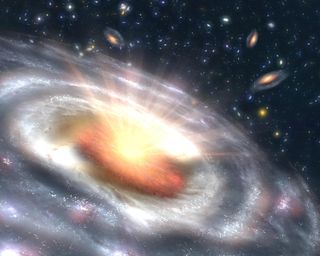Using the James Webb Space Telescope, astronomers have peered back 13 billion years to discover surprisingly lonely supermassive black hole-powered quasars. The James Webb Space Telescope’s (JWST) observations are confusing because isolated black holes should struggle to gather enough mass to reach supermassive status, especially just a few hundred million years after the Big Bang. The discovery further muddies the waters when it comes to the puzzle of how some black holes grew to masses equivalent to millions or even billions of suns when the universe was less than a…
Read More